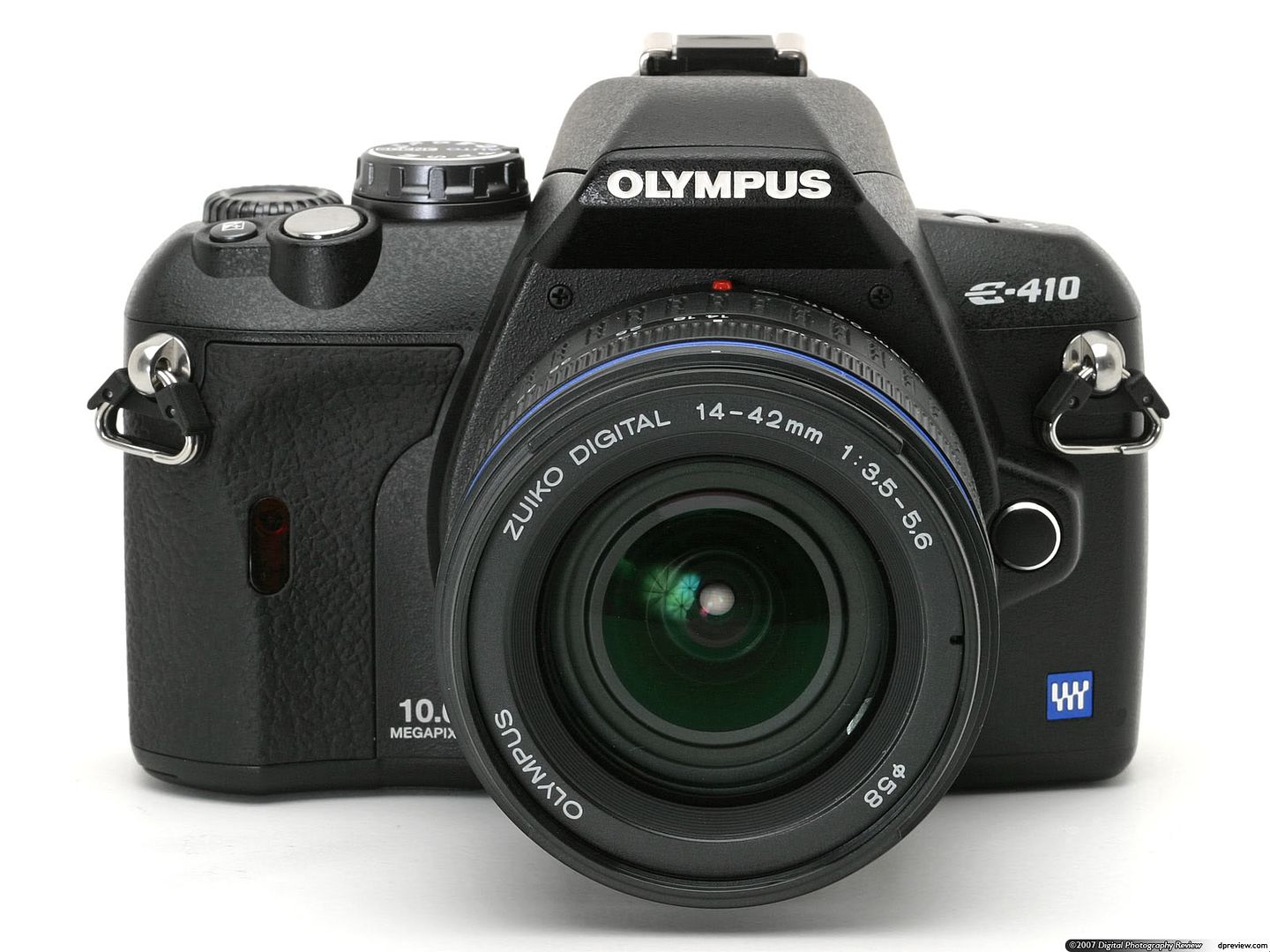Tiny Techlust: The Smallest DSLR, Olympus E-410
Ok. I'm in the market for a DSLR. I mean no offense to my point and shoots, but I'm starting to feel the desire to shoot a little faster, take more pictures with less delay as possible. That's one of the things I'm noticing with more intermediate point and shoot cameras. They may have nearly all the features of a true DSLR, the ability to use a hot shoe flash (hmmm... lets talk about that in a future entry...) but when it comes down to autofocusing and getting the shot, there's a little more lag than I'd like to have. So, within the budget I'm setting for myself (this doesn't mean I actually have said budget at the moment mind you), I've set my sights on a couple of choices, one of which was blogged in a previous entry, and the other in this one. So lets get to it.
I want an Olympus E-410.
Announced March 5, 2007, the Olympus E-410 was set to be one of the world's firsts. It was one of the world's first consumer DSLRs to carry the live-view function, allowing users to frame and take shots using their LCDs much like they would use a point and shoot camera. It was also one of the world's first smallest Digital Single Lens Reflex camera (the other one being the E-400, a 6 month old CCD-based iteration, and currently, well... later entries yes?). Measuring 130 x 91 x 53 mm ( or 5.1 x 3.6 x 2.1 in - body only), Olympus' 400-series cameras would be the most compact DSLRs on the market today, much smaller than any DSLR from either Canon or Nikon (or any other manufacturer for that matter).
Possessing an unorthodox and yet ergonomic grip, the E-410 weighs in at 435 grams including the battery, which makes for a comfortable afternoon / day snapping away. The only thing that will probably limit your shots would be the battery it uses, the BLS1, a battery designed for the 400 series. With a capacity of 1150 mAh, it won't give you the mileage that the BLM1 does (standard for all other E-series and some C-series cameras) but what it doesn't give you is added weight, which is basically the point.
Like all Olympus other E-series cameras, the E-410 uses a 4/3 type sensor, and therefor 4/3 type lenses. Kits come with either just the ZUIKO Digital 14 - 42 mm F3.5 - F5.6 lens or can be purchased with the ZUIKO Digital 40 - 150 mm F4.0 - F5.6 as well. To get an idea what that means in 35mm terms, multiply them by 2. Both lenses give you significant coverage from 28 to 300mm.
For an indepth review, check out dpreview.
I want an Olympus E-410.
Announced March 5, 2007, the Olympus E-410 was set to be one of the world's firsts. It was one of the world's first consumer DSLRs to carry the live-view function, allowing users to frame and take shots using their LCDs much like they would use a point and shoot camera. It was also one of the world's first smallest Digital Single Lens Reflex camera (the other one being the E-400, a 6 month old CCD-based iteration, and currently, well... later entries yes?). Measuring 130 x 91 x 53 mm ( or 5.1 x 3.6 x 2.1 in - body only), Olympus' 400-series cameras would be the most compact DSLRs on the market today, much smaller than any DSLR from either Canon or Nikon (or any other manufacturer for that matter).
Possessing an unorthodox and yet ergonomic grip, the E-410 weighs in at 435 grams including the battery, which makes for a comfortable afternoon / day snapping away. The only thing that will probably limit your shots would be the battery it uses, the BLS1, a battery designed for the 400 series. With a capacity of 1150 mAh, it won't give you the mileage that the BLM1 does (standard for all other E-series and some C-series cameras) but what it doesn't give you is added weight, which is basically the point.
Like all Olympus other E-series cameras, the E-410 uses a 4/3 type sensor, and therefor 4/3 type lenses. Kits come with either just the ZUIKO Digital 14 - 42 mm F3.5 - F5.6 lens or can be purchased with the ZUIKO Digital 40 - 150 mm F4.0 - F5.6 as well. To get an idea what that means in 35mm terms, multiply them by 2. Both lenses give you significant coverage from 28 to 300mm.
For an indepth review, check out dpreview.


Comments
http://electronrun.wordpress.com/2008/03/10/olympus-e-420-worlds-smallest-dslr/
thanks for the visit and the link. i get my info from dpreview. and if i'm not mistaken, and as far as they're concerned, the e420 and 410 are basically the same as far as size goes. one of the main differences would be the quicker LCD live view autofocus function, making the e420 more like a point and shoot than the others with the same ability before it. another would be a bigger LCD. :P both points i will mention in a future entry.
again, thanks!